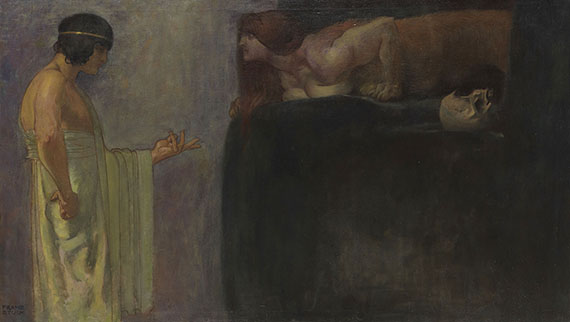Dictionary


Early Baroque
The early baroque era lasted from 1580/1600 to circa 1630. At the end of the 16th century, mannerism, with its unusual and often decorative forms, was still the dominant style. This was the beginning of the early baroque period, when artists attempted to transform mannerism into a painterly and realistic style and simultaneously transcend it. Around 1600, artists began looking to the past for inspiration, and this retrogressive tendency, which was aptly described by Erich Hubala as the "re-naissance of the Renaissance", spread from Italy to the rest of Europe. Germany was the setting of a so-called "Dürer Renaissance", around 1600. Artists such as Hans Krumpper (c. 1570-1634), a sculptor from Weilheim, contributed towards the early baroque renewal of art. The style was, however, pioneered by the Italians and particularly influenced by the painting of Annibale Carracci (1560-1609) and Michelangelo Merisi da Caravaggio (1571-1610). Other exponents of the new style included Federigo Barocci and Lodovico Cardi (called Cigoli). Following a transitional phase in architecture, which can be attributed to Giacomo della Porta’s Il Gesu façade, Swiss-born Carlo Maderno (c. 1556-1629) pioneered early baroque building in Rome. Other early baroque architects included Francesco Borromini and his rather classically inclined competitor, Gianlorenzo Bernini (1598-1680). The latter was also the leading sculptor of the early and high Roman baroque.
The early baroque era lasted from 1580/1600 to circa 1630. At the end of the 16th century, mannerism, with its unusual and often decorative forms, was still the dominant style. This was the beginning of the early baroque period, when artists attempted to transform mannerism into a painterly and realistic style and simultaneously transcend it. Around 1600, artists began looking to the past for inspiration, and this retrogressive tendency, which was aptly described by Erich Hubala as the "re-naissance of the Renaissance", spread from Italy to the rest of Europe. Germany was the setting of a so-called "Dürer Renaissance", around 1600. Artists such as Hans Krumpper (c. 1570-1634), a sculptor from Weilheim, contributed towards the early baroque renewal of art. The style was, however, pioneered by the Italians and particularly influenced by the painting of Annibale Carracci (1560-1609) and Michelangelo Merisi da Caravaggio (1571-1610). Other exponents of the new style included Federigo Barocci and Lodovico Cardi (called Cigoli). Following a transitional phase in architecture, which can be attributed to Giacomo della Porta’s Il Gesu façade, Swiss-born Carlo Maderno (c. 1556-1629) pioneered early baroque building in Rome. Other early baroque architects included Francesco Borromini and his rather classically inclined competitor, Gianlorenzo Bernini (1598-1680). The latter was also the leading sculptor of the early and high Roman baroque.
Offers
Headquarters
Joseph-Wild-Str. 18
81829 Munich
Phone: +49 89 55 244-0
Fax: +49 89 55 244-177
info@kettererkunst.de
Louisa von Saucken / Undine Schleifer
Holstenwall 5
20355 Hamburg
Phone: +49 40 37 49 61-0
Fax: +49 40 37 49 61-66
infohamburg@kettererkunst.de
Dr. Simone Wiechers / Nane Schlage
Fasanenstr. 70
10719 Berlin
Phone: +49 30 88 67 53-63
Fax: +49 30 88 67 56-43
infoberlin@kettererkunst.de
Cordula Lichtenberg
Gertrudenstraße 24-28
50667 Cologne
Phone: +49 221 510 908-15
infokoeln@kettererkunst.de
Hessen
Rhineland-Palatinate
Miriam Heß
Phone: +49 62 21 58 80-038
Fax: +49 62 21 58 80-595
infoheidelberg@kettererkunst.de
We will inform you in time.




